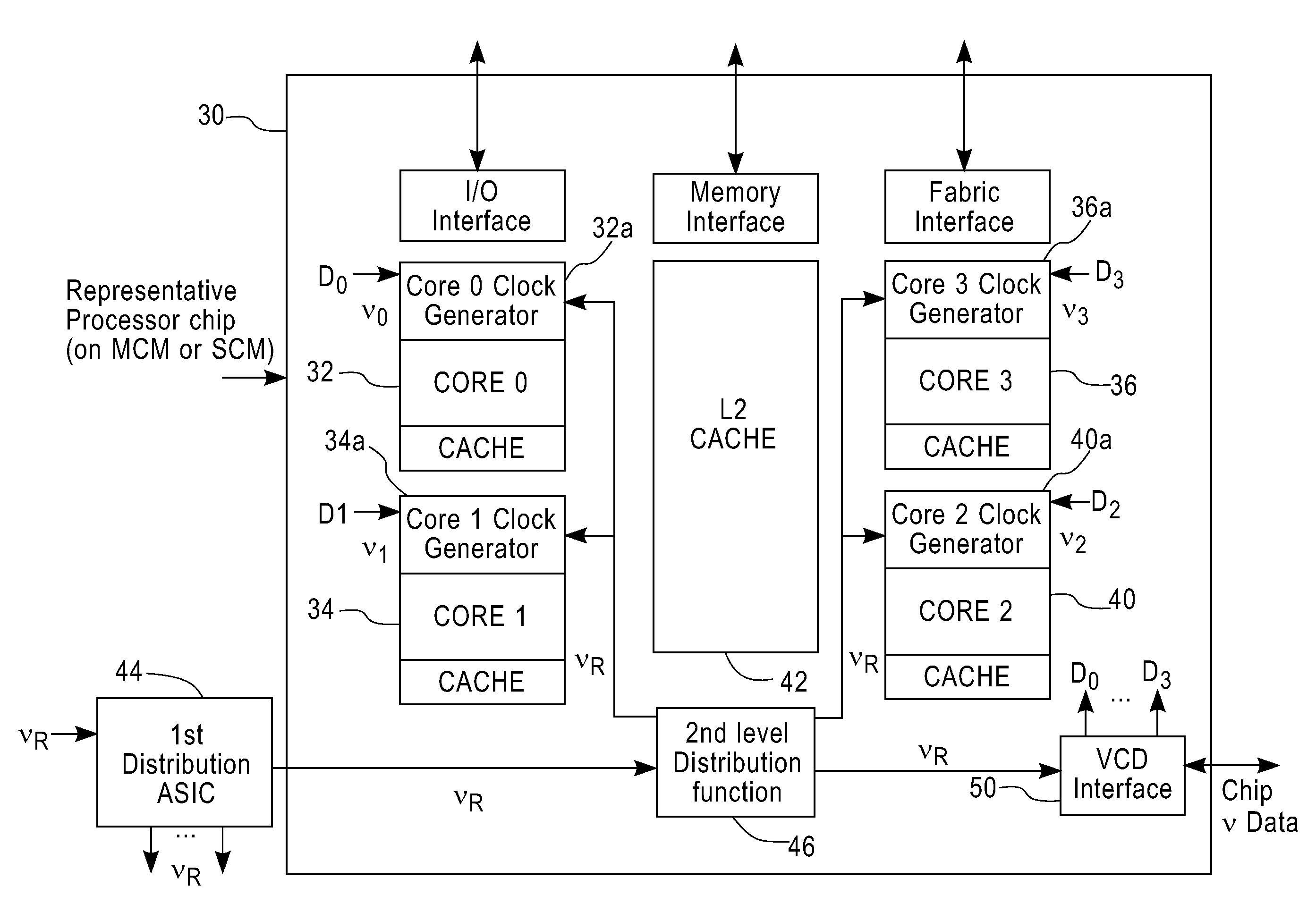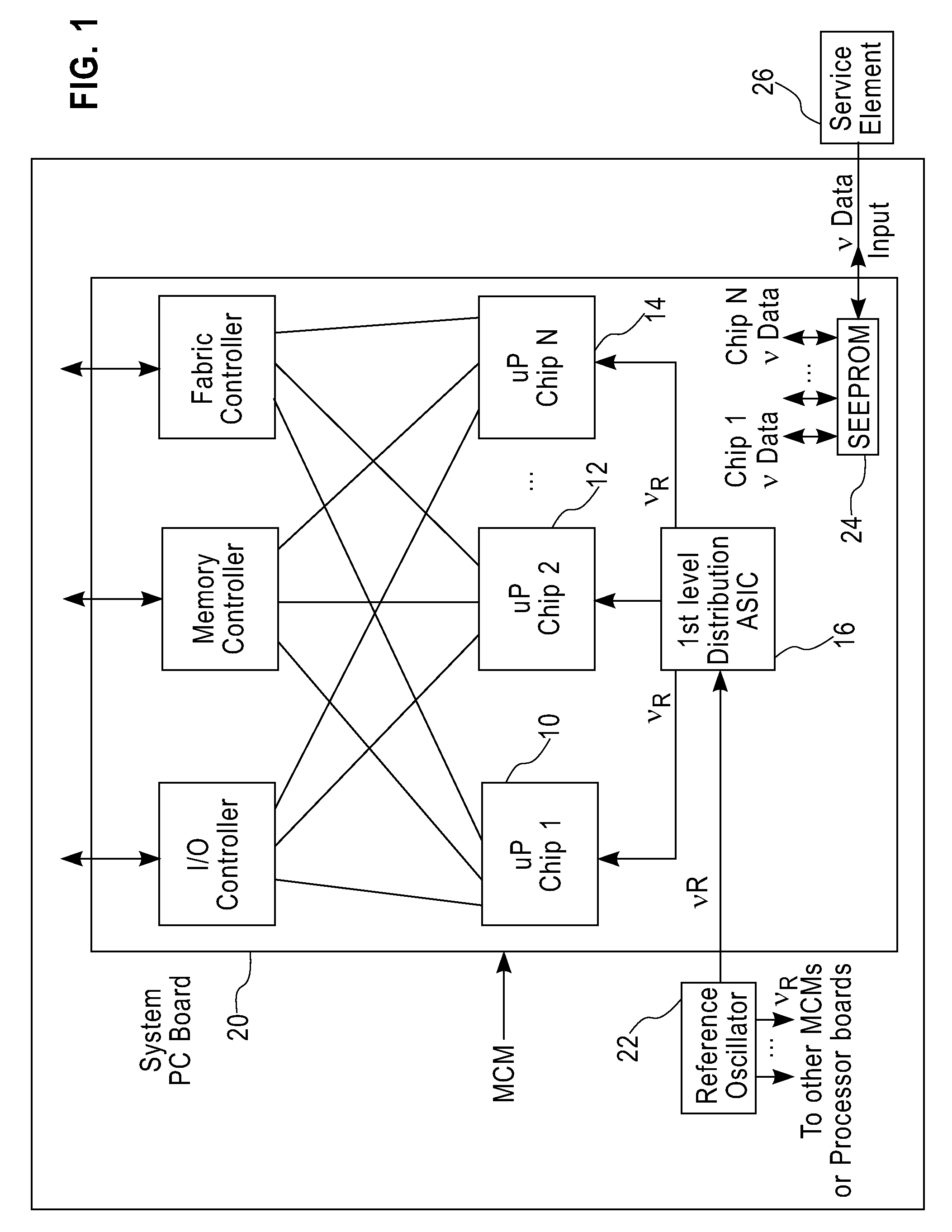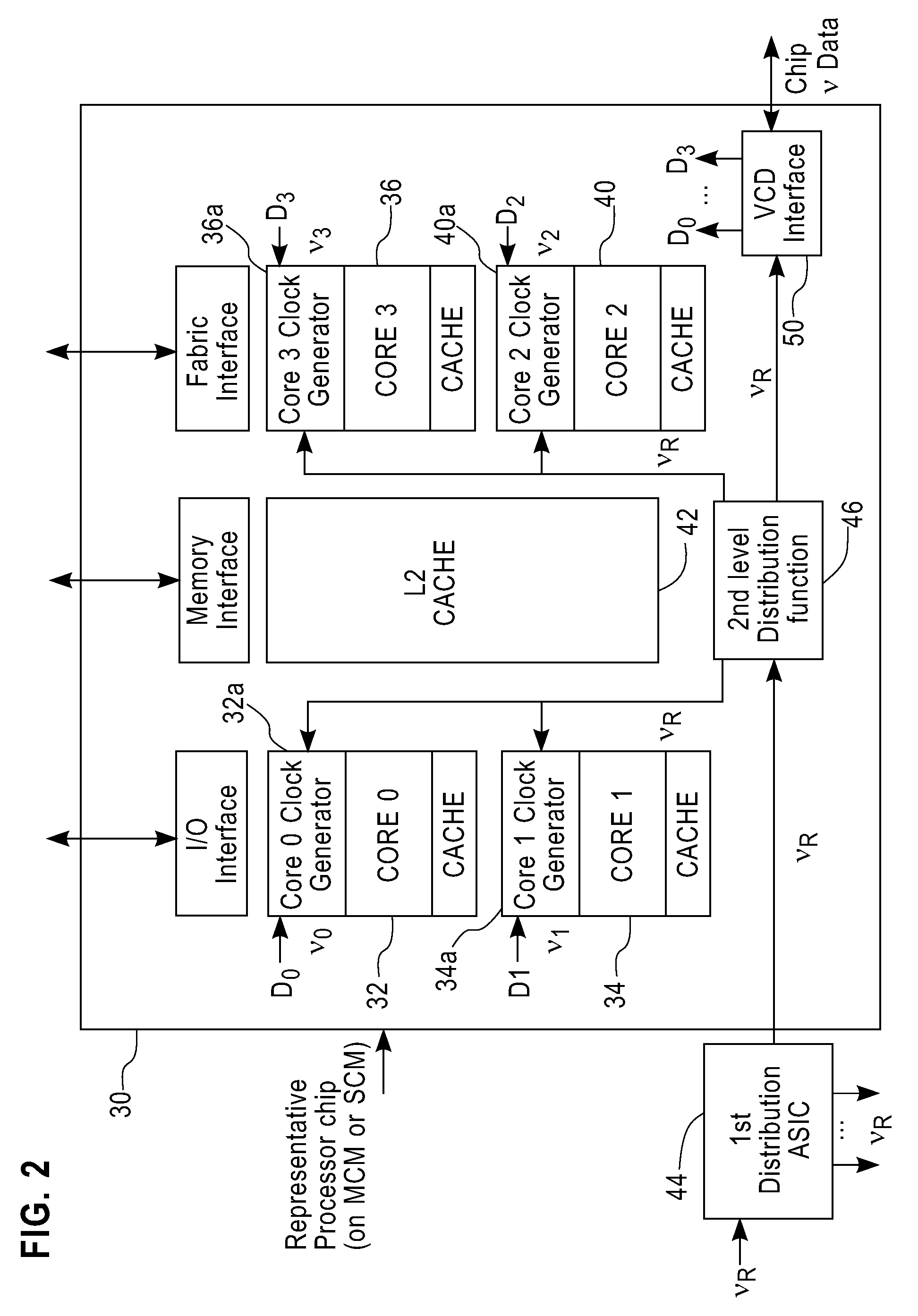Method and system for digital frequency clocking in processor cores
a multi-core processor and digital frequency clocking technology, applied in the direction of generating/distributing signals, instruments, sustainable buildings, etc., can solve the problems of inability to scale and scale the technique, the long-term strategy of high frequency clocking is untenable, and the inability to achieve server systems. to achieve the effect of minimizing latency, reducing latency, and increasing latency
- Summary
- Abstract
- Description
- Claims
- Application Information
AI Technical Summary
Benefits of technology
Problems solved by technology
Method used
Image
Examples
Embodiment Construction
[0026]The current and future generation of commercial servers is and will be composed of multiple processor chips with multiple uP cores, which enables server platforms with 2-64 processors today. Future systems will likely contain upwards of 128-256 processors and possibly higher. The need to operate this configuration in a tightly coupled mode as a Symmetric Multi-processor (SMP) will require a new clocking paradigm. The current technique of transmitting analog clocks to each processor is not practical for large configurations running at high processor speeds (>5 GHz).
[0027]FIG. 1 illustrates a typical computing Server that is comprised of multiple microprocessor (uP) chips (N) 10, 12, 14, which has internal clocking functions (e.g. digital signal processor, DSP, core clock generator, etc.) that require the machine reference oscillator (nR). A first level distribution ASIC (Application Specific Integrated Circuit) 16 on the MCM or system board 20 re-drives and fans out the referen...
PUM
 Login to View More
Login to View More Abstract
Description
Claims
Application Information
 Login to View More
Login to View More - R&D
- Intellectual Property
- Life Sciences
- Materials
- Tech Scout
- Unparalleled Data Quality
- Higher Quality Content
- 60% Fewer Hallucinations
Browse by: Latest US Patents, China's latest patents, Technical Efficacy Thesaurus, Application Domain, Technology Topic, Popular Technical Reports.
© 2025 PatSnap. All rights reserved.Legal|Privacy policy|Modern Slavery Act Transparency Statement|Sitemap|About US| Contact US: help@patsnap.com



